By Bruce Connolly | chinadaily.com.cn
Updated: March 6, 2018
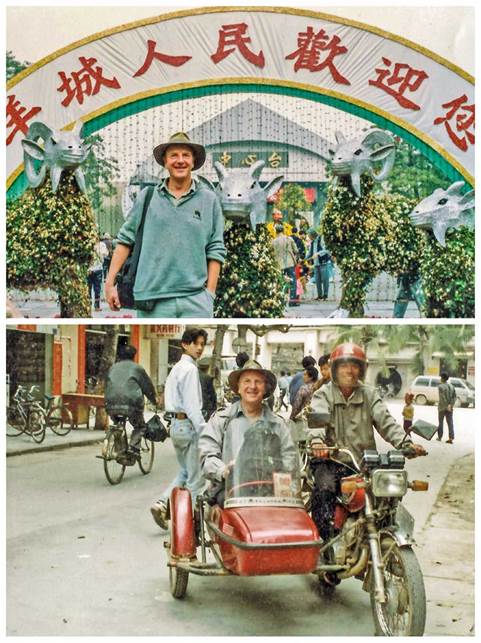
A very happy time for Bruce from 1992 to 1993. [Photo by Bruce Connolly/chinadaily.com.cn]
Following a brief visit to China in 1987 it was my dream to someday return. Traveling the length and breadth of the country felt like an impossible dream then. However, in 1992 an opportunity to come back materialized. Not for a few weeks' adventure, but to live and work for a year in Guangzhou, capital city of southern China's Guangdong province. This was initially a dilemma, for my travels were always an escape from work. I had built up much in my native Scotland and was reluctant to be away so long from family and friends. I knew if I agreed, life surely would never be the same. What transpired, of course, was a unique opportunity to experience much about a country normal travel could never have provided. I would come close to society; to be part of a system at that time so different to my norm; to work and socialize with so many people from different backgrounds.
Still a little apprehensive as I travelled by train to Guangzhou from Hong Kong, the welcome I received from a group of future colleagues at the station was overwhelming. I thought, "I am going to enjoy this!" There I was, being taken in the school's minibus out to the suburbs before turning onto a campus more resembling a tropical garden. It was beautiful - the inaugural reception dinner, the toasts, the laughter, the camaraderie. I was grinning. Indeed, my students would often ask, "Bruce why are you always smiling?" What else could I say?
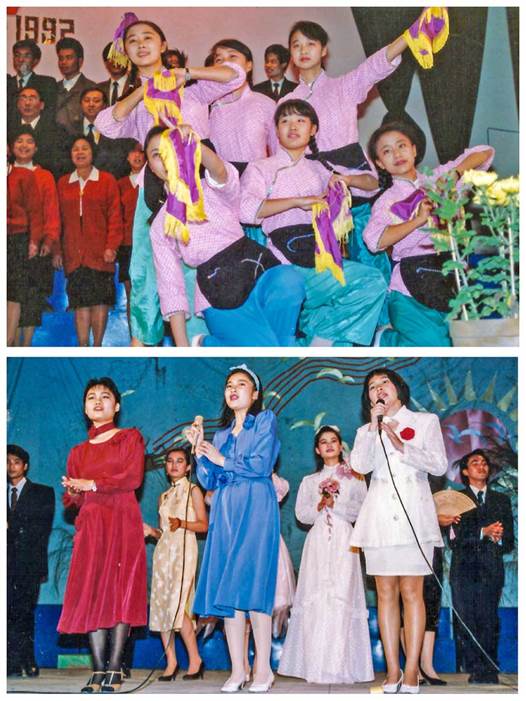
Cultural festivals at GDFLNS in 1992. [Photo by Bruce Connolly/chinadaily.com.cn]
My former Scottish local government, Strathclyde Region, had at the time paired with Guangdong province. At that time, as China opened up to the outside world, Guangdong was a major driver of the country's economic growth. China was determined to build a modern, prosperous society but there was a long way to go. Trade, business and investment were all so important, but to be successful internationally, language skills were vital. Very few Westerners were fluent in everyday Chinese or familiar with the culture and peculiarities of conducting business. Creating a high level of proficiency in English was deemed a priority. Such a goal required well-trained teachers. This was the role of Guangdong Foreign Languages Normal School, which had been established specifically to train future English teachers. Students, selected on their English proficiency, came from towns and villages across Guangdong. They would progress through three years of normal school training, with the most successful going on for a further two years of college study within the campus. Upon graduating, the leading scholars skilled in oral communication and retaining a deeper understanding of the language and its complexities, would normally return to key provincial middle schools.
There were immediate differences to teaching back in Scotland. I was there when a unique state system still operated in China. I suppose "danwei" or "work unit" would be the appropriate term. Upon being appointed to the school, housing or accommodation would be provided. Indeed, some retired teachers and administrators continued to live on campus. Other social, medical and educational services were supplied. Outings and entertainment events were organized, which I gladly attended. To me there was a feeling of harmony. I lived onsite, in a very pleasant, well-provided apartment. This was so alien to the system I grew up with, where teachers were at school from 9 to 4 daily, often followed by long commutes home. People socialized away from their workplace, while in China during the early 1990's almost all aspects of life revolved around it.
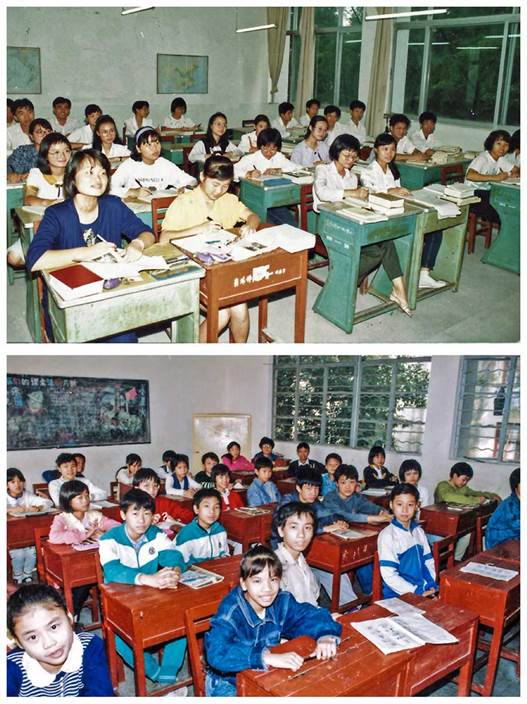
Classroom at GDFLNS and local elementary school in 1992. [Photo by Bruce Connolly/chinadaily.com.cn]
When classes finished, I went out for a badminton session with the students or took the school bus downtown - some married staff lived on other campuses with their spouses. There was little privacy, which I found more amusing than intrusive: my behavioural quirks initially provided a source of conversation for my colleagues until they became more familiar with me.
I was timetabled for 'Intensive Reading' with several graduating college classes. It was with some trepidation on a hot September morning that I approached my first class. There were 30 students - 25 girls but only five boys. They greeted me with cheerful applause, followed by a rendition of the national teachers' song. The blackboard read "Welcome Mr. Bruce!" I felt almost in tears when a sudden silence fell. What was wrong? A quiet voice informed me, "We are waiting on your lesson to begin." I mentally sang "I'm in heaven" a few times before pulling myself together and into a teaching style more like university than school.
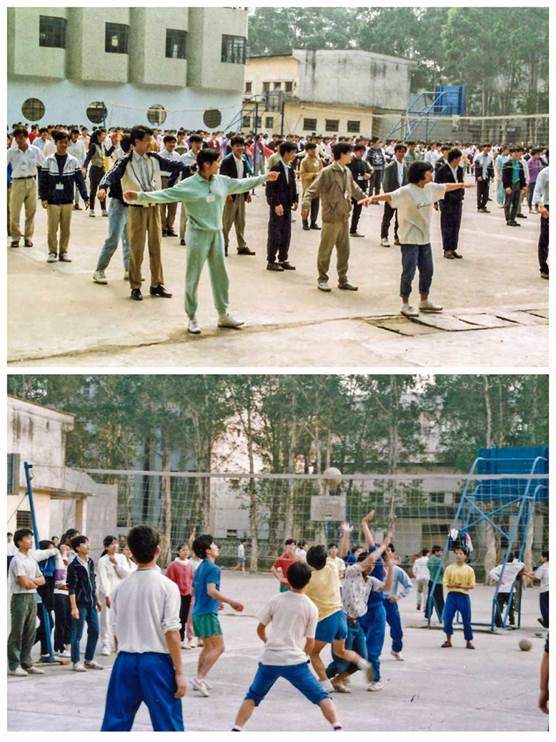
Morning exercise and afternoon games in 1992. [Photo by Bruce Connolly/chinadaily.com.cn]
Teaching at that time was much more formalized than my familiar norms. Resources were relatively basic - blackboard, chalk and talk, though television monitors were in every classroom. In Scotland the emphasis was more on worksheet - based individualized learning. In Guangzhou I spoke intensively, relatively slowly, clearly and thoughtfully with each hour-long class. When the lesson finished, students would crowd around my desk asking questions about the topic. Initially, relations were quite formal. Teachers provided the information, students learned what the teacher taught without any interruption. It was more rote learning, where at exam time they would regurgitate what they had been taught. The challenge, which I won, was to have interaction, to stimulate critical thinking about what they were studying. That year proved to be personally rejuvenating.
One evening when I returned to the school, all the classroom lights were on. I discovered my students all quietly studying, reading or doing homework. Evenings were time for private study - this was after having sports and dinner. Talking with me about why they studied so hard, they would explain how education was essential for the future of the country. Many of their parents had gone through a difficult period of broken education, and they were the new generation. They had no distractions. There were no boyfriends, for example. Romance, followed by marriage, was for after graduation. There was a determination to succeed not just for themselves, but for China. I recall sleepless nights thinking how this level of commitment must be repeating itself across much of the country. I felt I was witnessing something big happening, foundations being laid for the future.
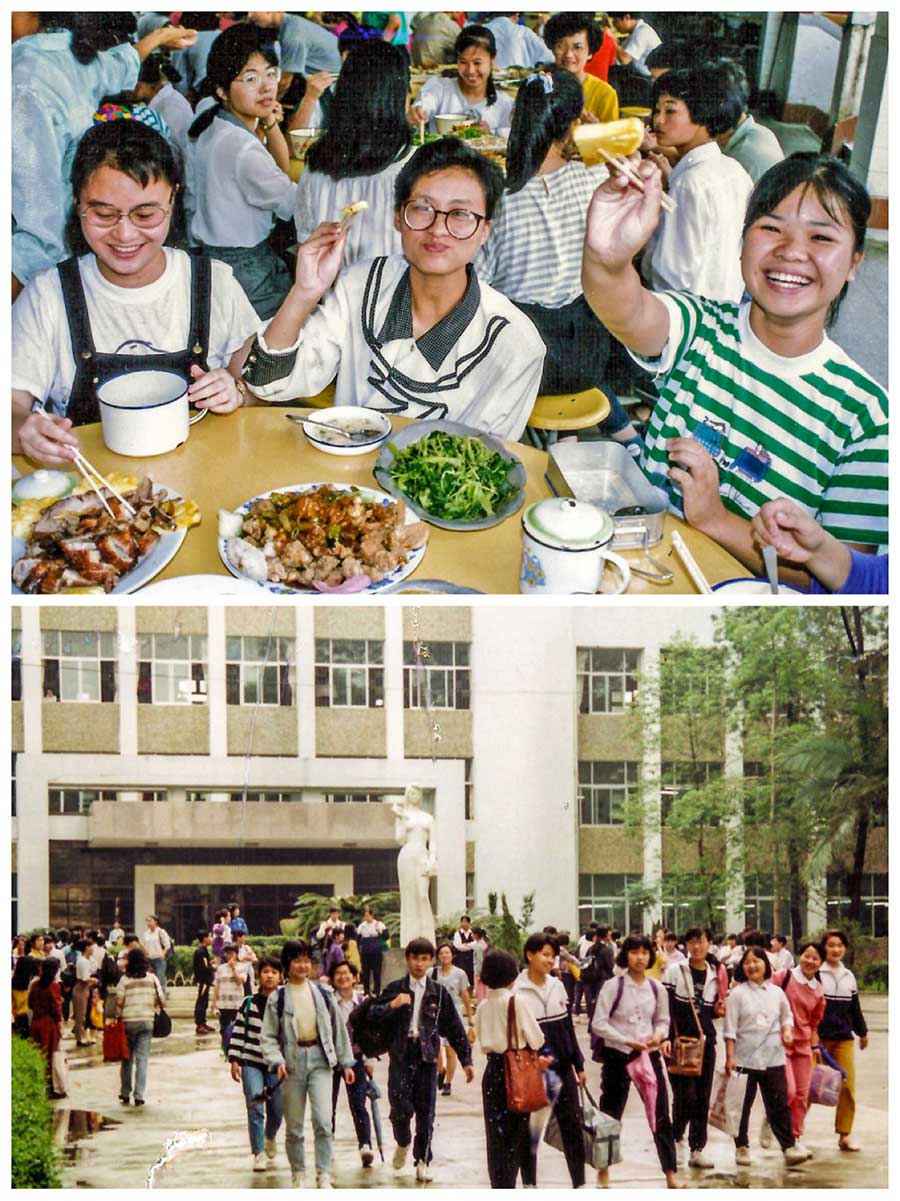
Graduation lunch and holidays start in 1993. [Photo by Bruce Connolly/chinadaily.com.cn]
In late June 1993 the graduation ceremony was at times an emotional parting for students who had lived together over five years. For me, I felt happy to be witnessing their success but also sadness, as my year with them was drawing to a close. I had enjoyed my time but also appreciated the insights into Chinese education and society. That summer included invites to hometowns and villages across Guangdong before heading back to the UK.
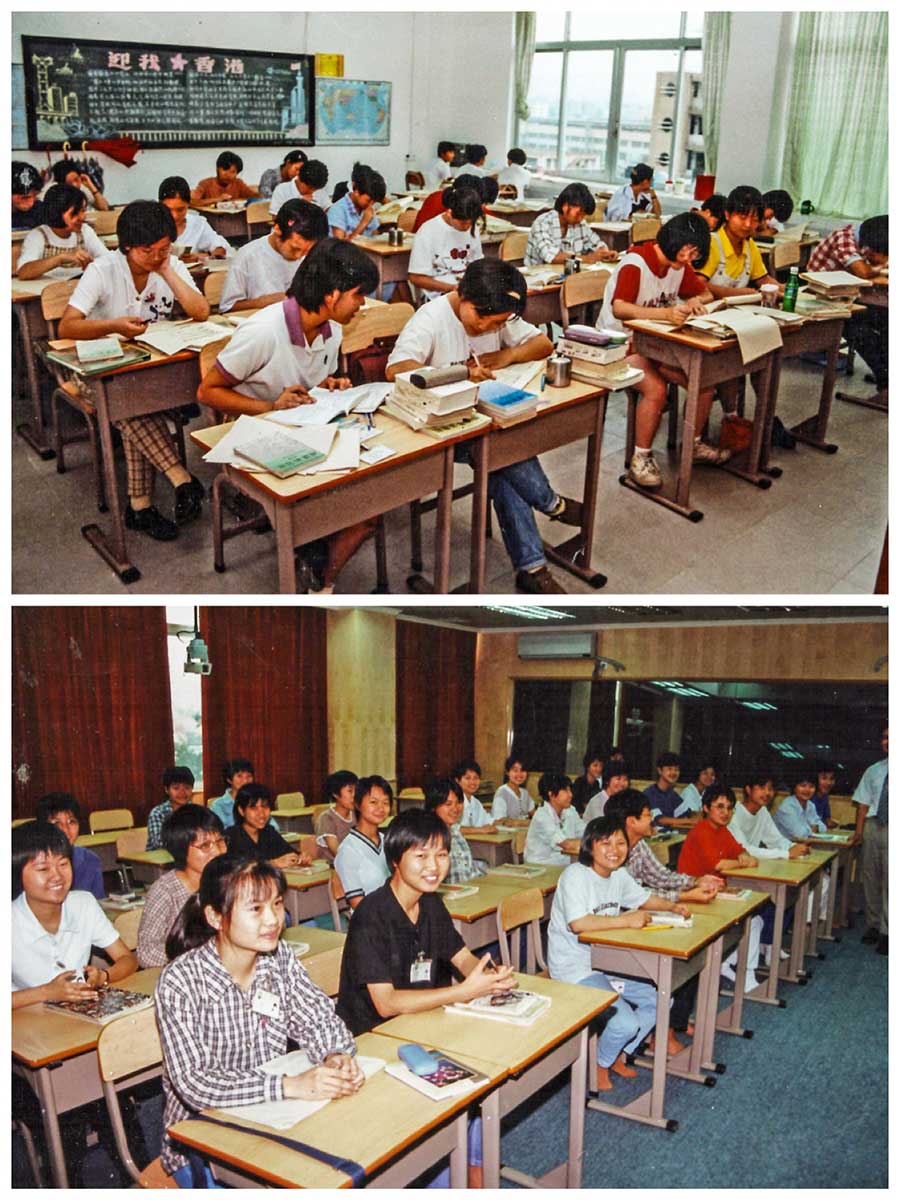
Teaching rooms at GDFLNS in 1997. [Photo by Bruce Connolly/chinadaily.com.cn]
I returned to the campus through the 1990's. Those visits illustrated rapid evolution in the way education was being delivered. In 1997 a new teaching building had opened. 12 floors high, at that time the tallest school in China - the atrium feeling more like a hotel than a school. High-tech innovations abounded - from digital library cards to computerised lesson delivery facilities. Students had extensive opportunities to practice with the latest in personal computers Blackboards were replaced by whiteboards. Mini-studios allowed filming of mock-up lessons. Language labs provided for more thorough oral practice compared to whole-class teaching. An increasingly interactive approach was being followed within the classrooms. Teachers themselves were having to go back to school!
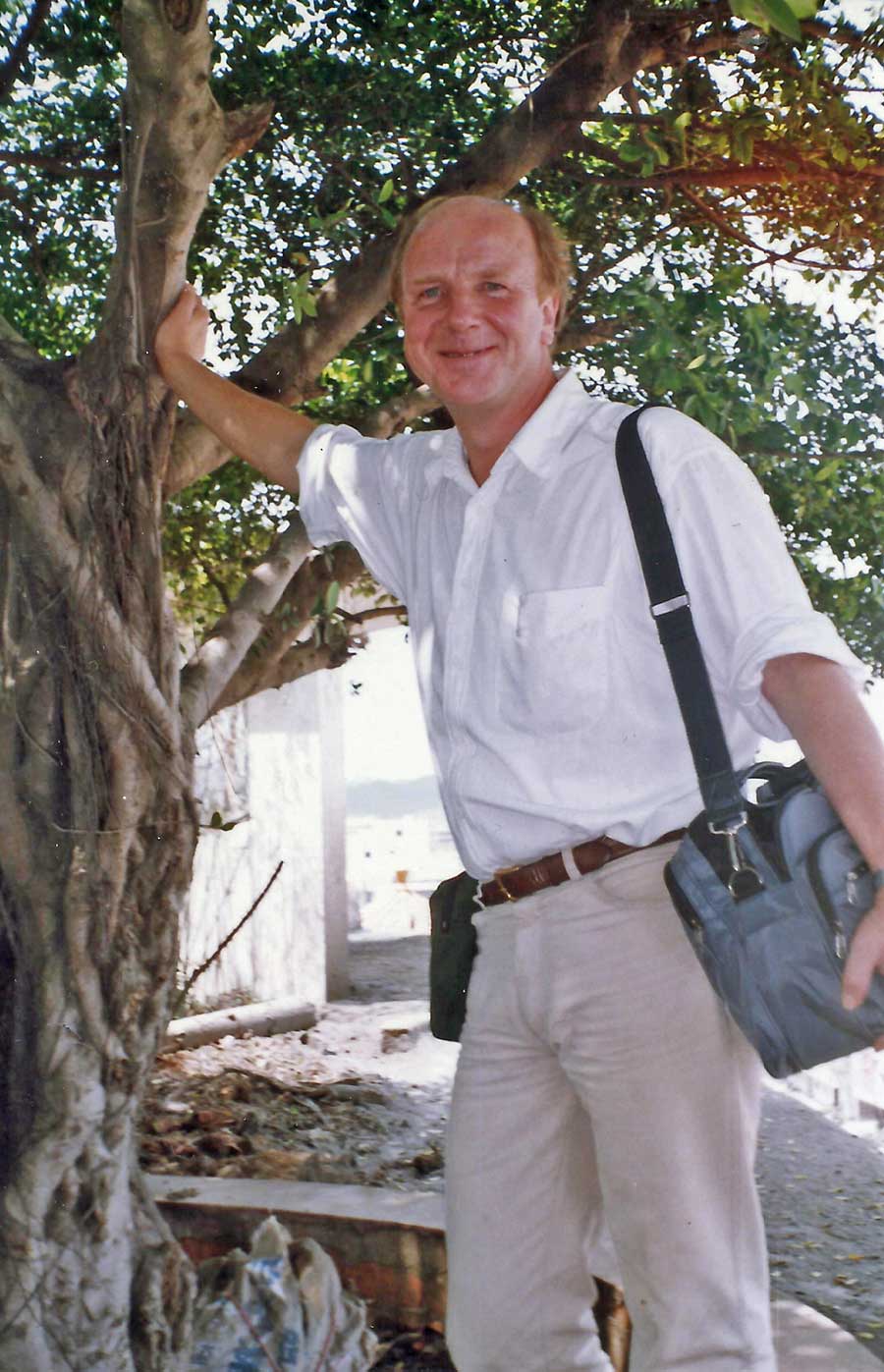
Bruce at GDFLNS in 1993. [Photo by Bruce Connolly/chinadaily.com.cn]
At the entrance to the campus a slogan reading 'Empowering with knowledge, exemplary in behaviour' summed up my feelings on GDFLNS. Having kept in touch with some students, it is pleasing to see the success they have made of their lives. Some coming from relatively basic rural backgrounds rose within education, business and society - all credit to the study and hard work they went through during their time in Guangzhou.
GDFLNS is today known as Guangdong Teachers College of Foreign Language and Arts Yanling Campus.
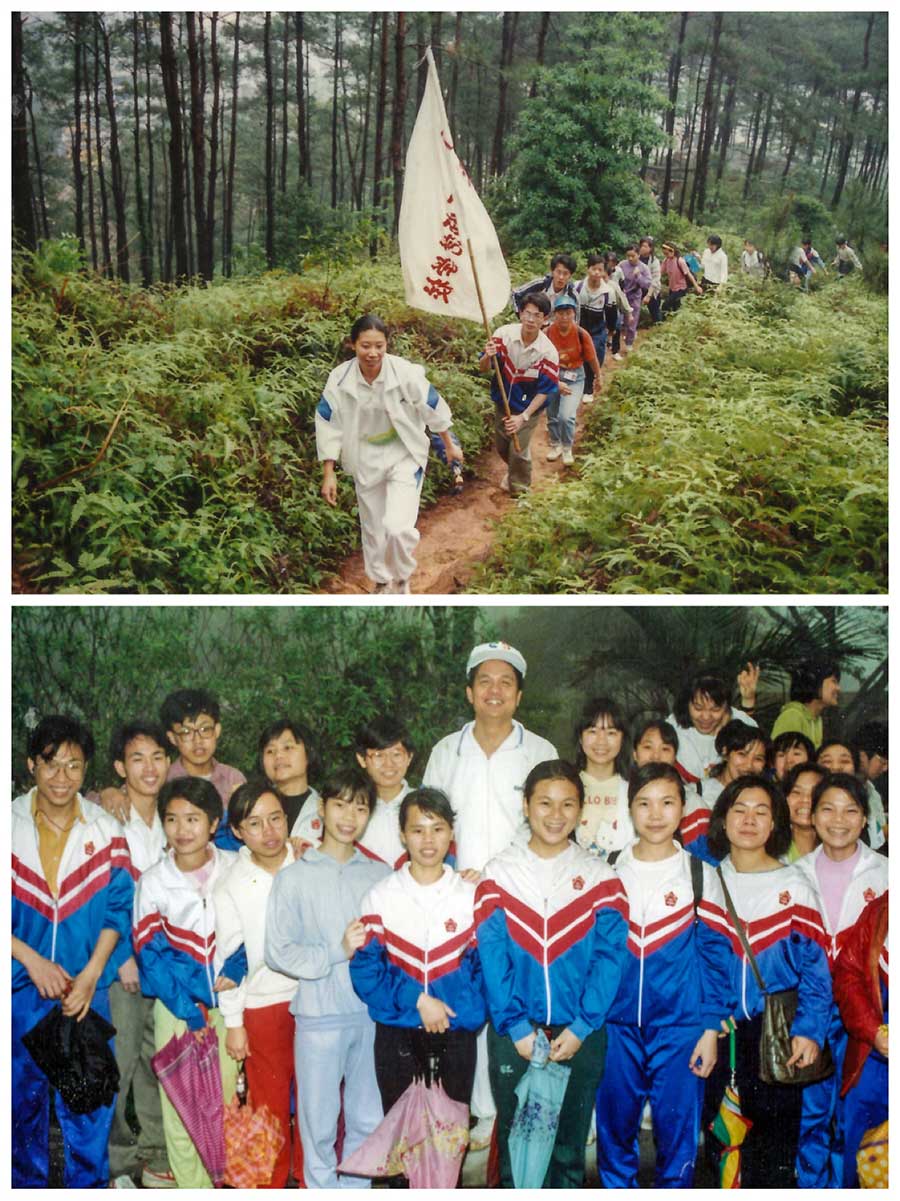
Climbing Baiyun Mountain and Principal Li with students in 1993. [Photo by Bruce Connolly/chinadaily.com.cn]
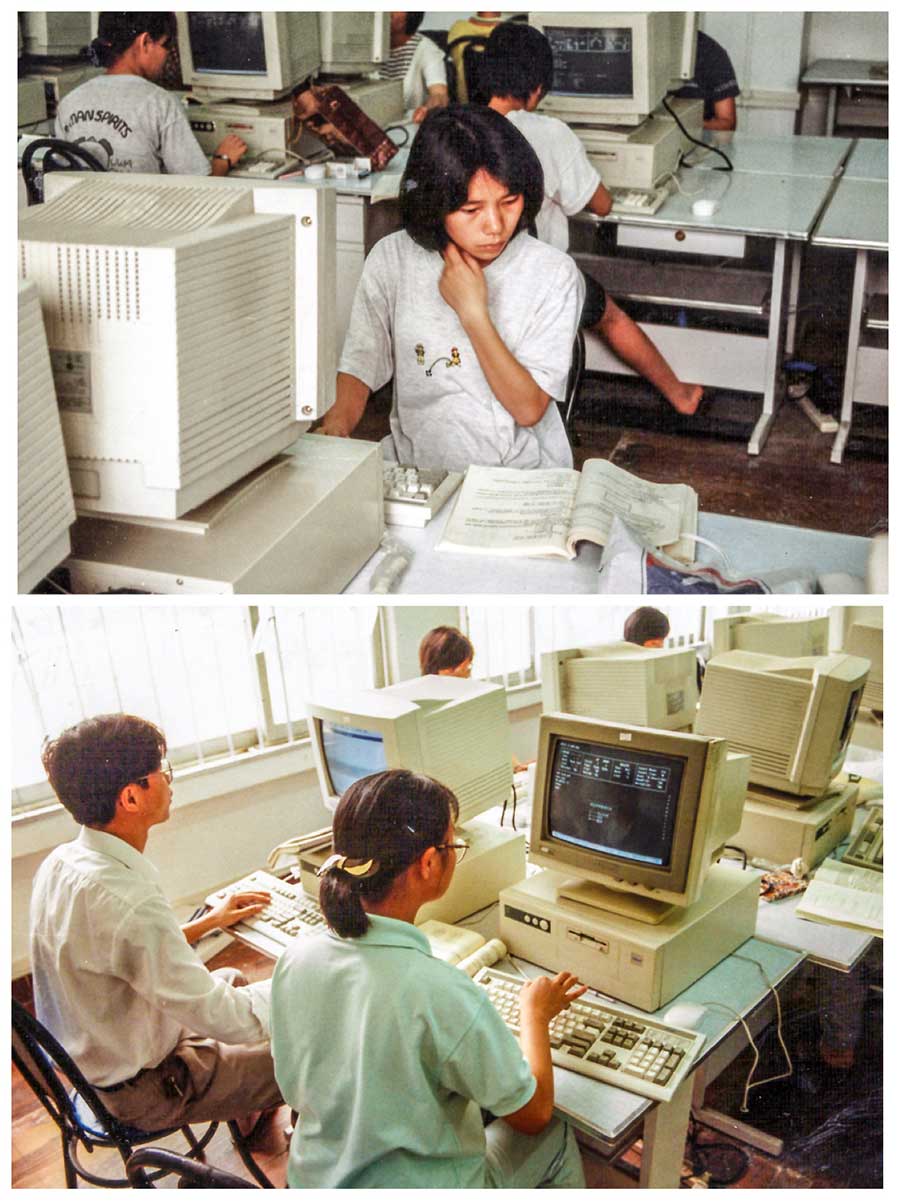
Computer classroom at GDFLNS in 1997. [Photo by Bruce Connolly/chinadaily.com.cn]
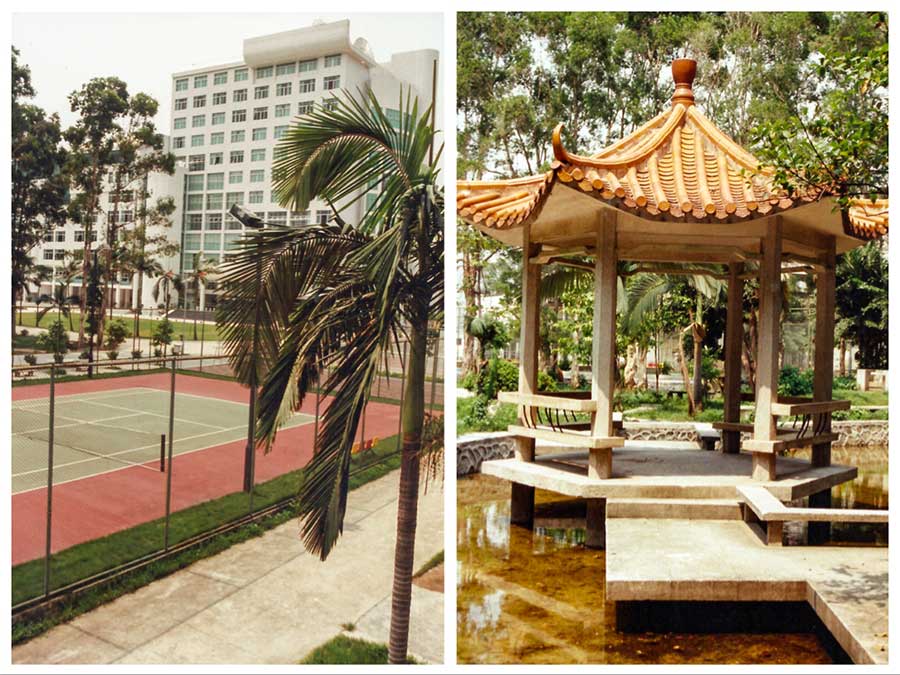
Campus at GDFLNS in 1997. [Photo by Bruce Connolly/chinadaily.com.cn]
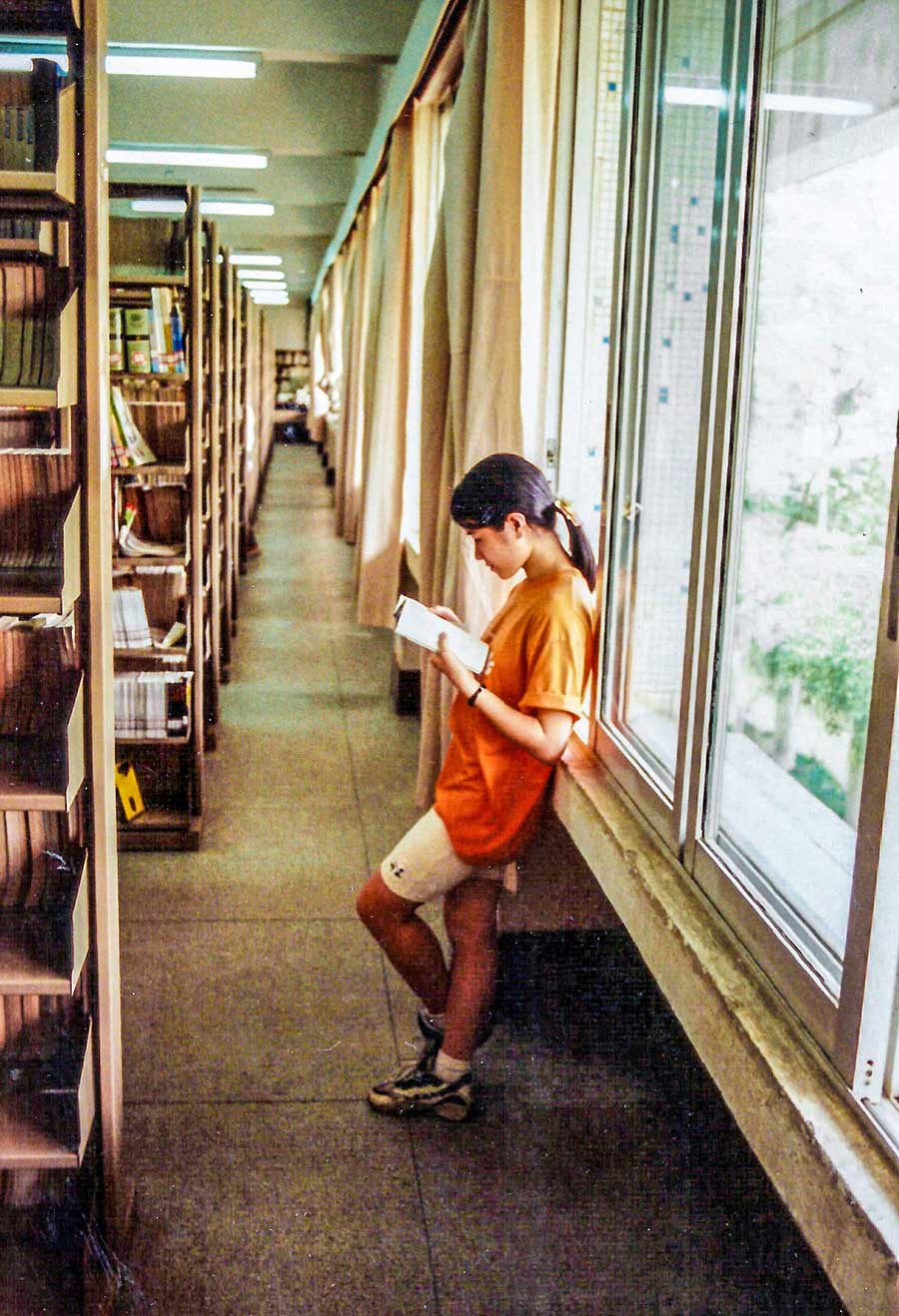
Library at GDFLNS in 1997. [Photo by Bruce Connolly/chinadaily.com.cn]
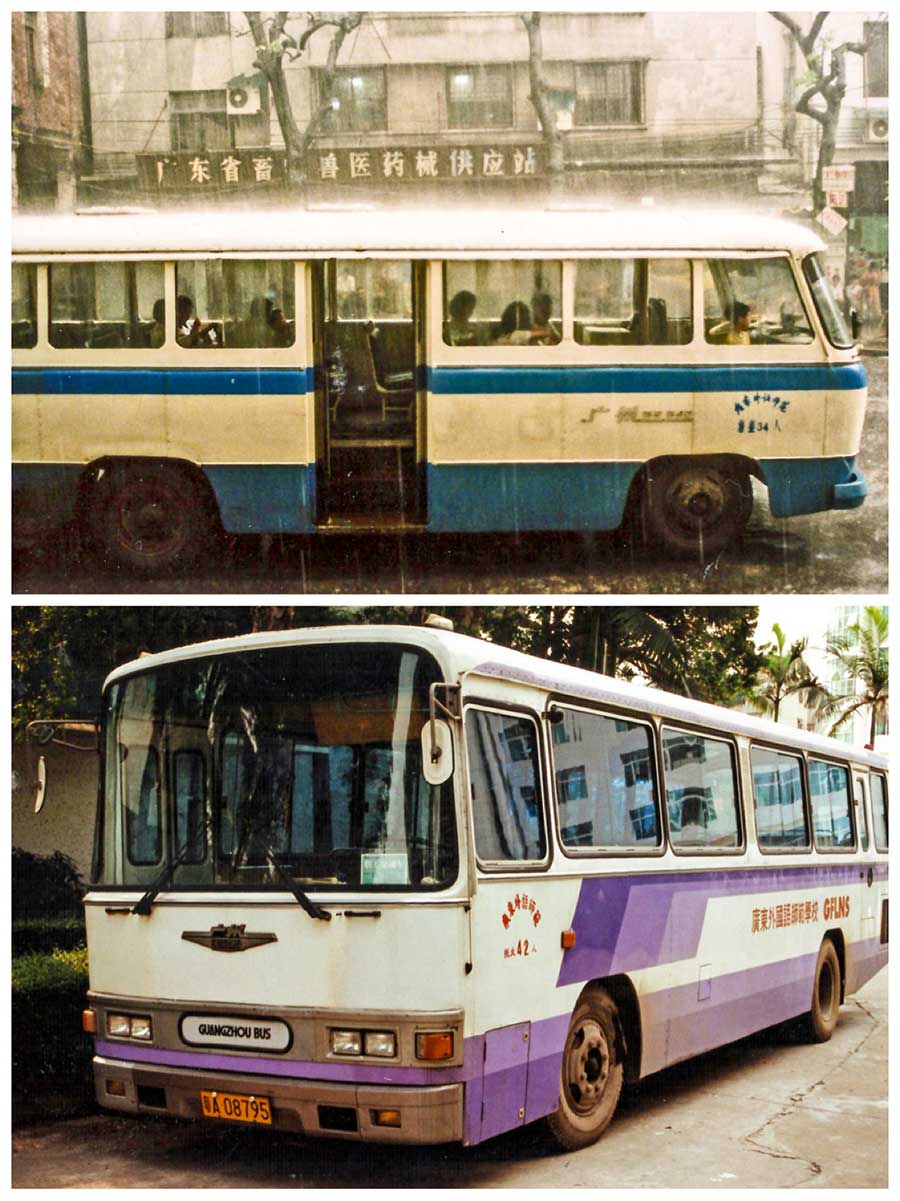
School bus at GDFLNS in 1992 and 1997. [Photo by Bruce Connolly/chinadaily.com.cn]
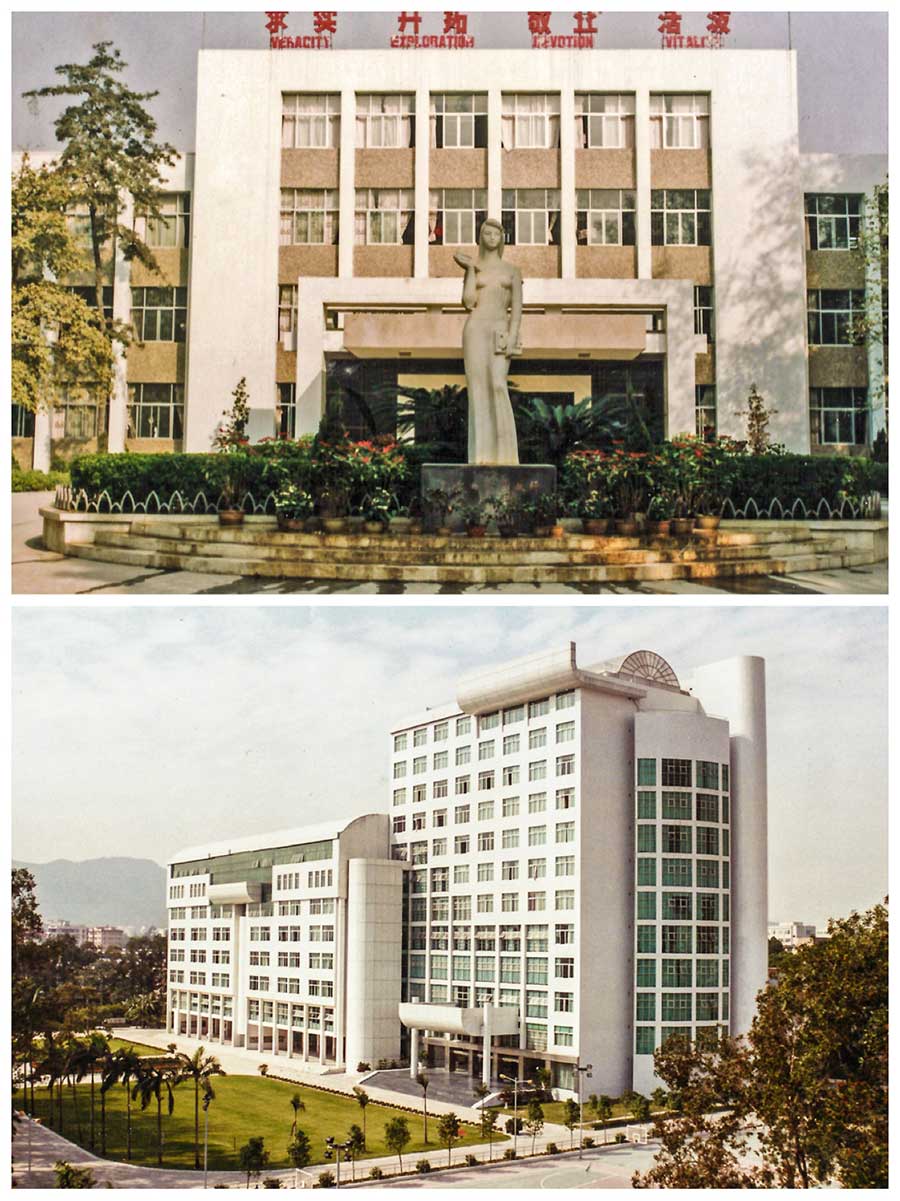
Guangdong Foreign Languages Normal School in 1992 and 1998. [Photo by Bruce Connolly/chinadaily.com.cn]
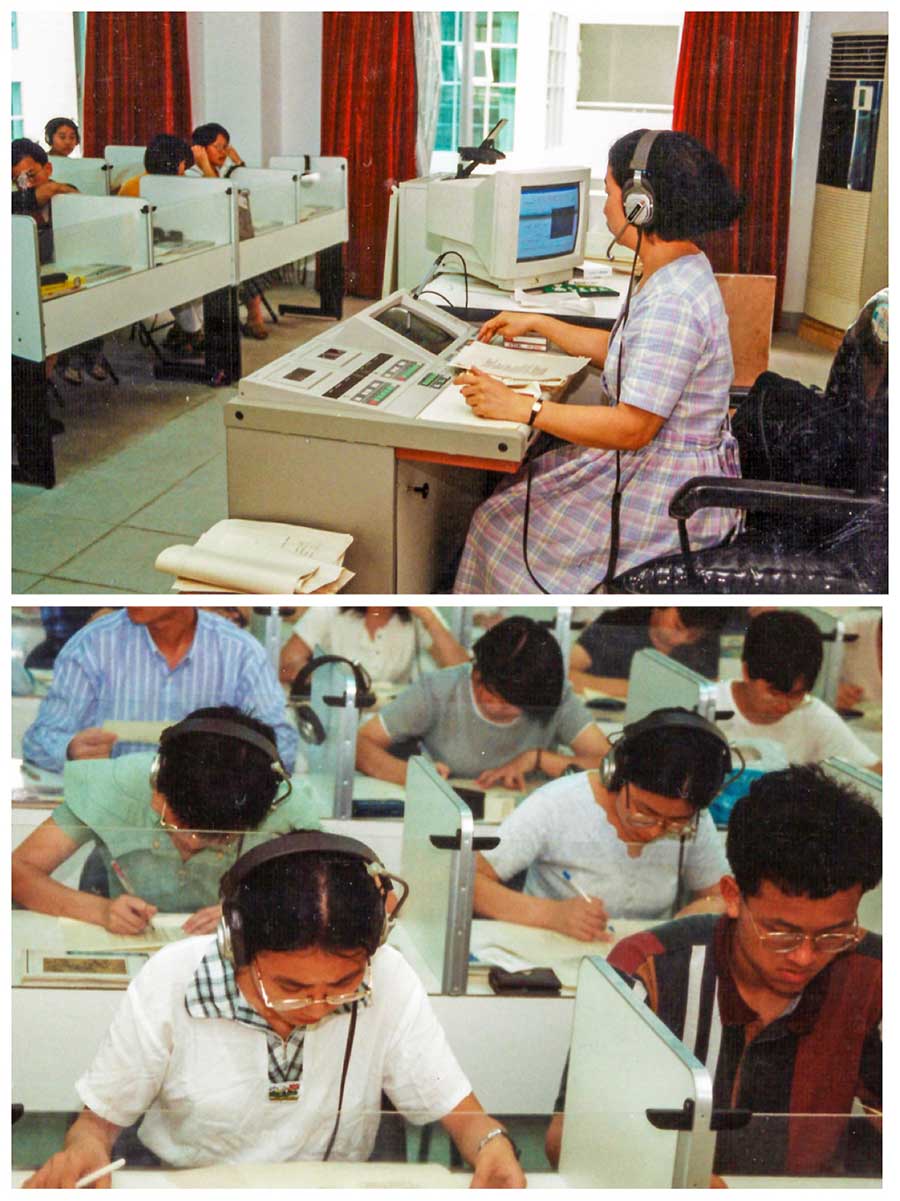
Language labs at GDFLNS in 1997. [Photo by Bruce Connolly/chinadaily.com.cn]
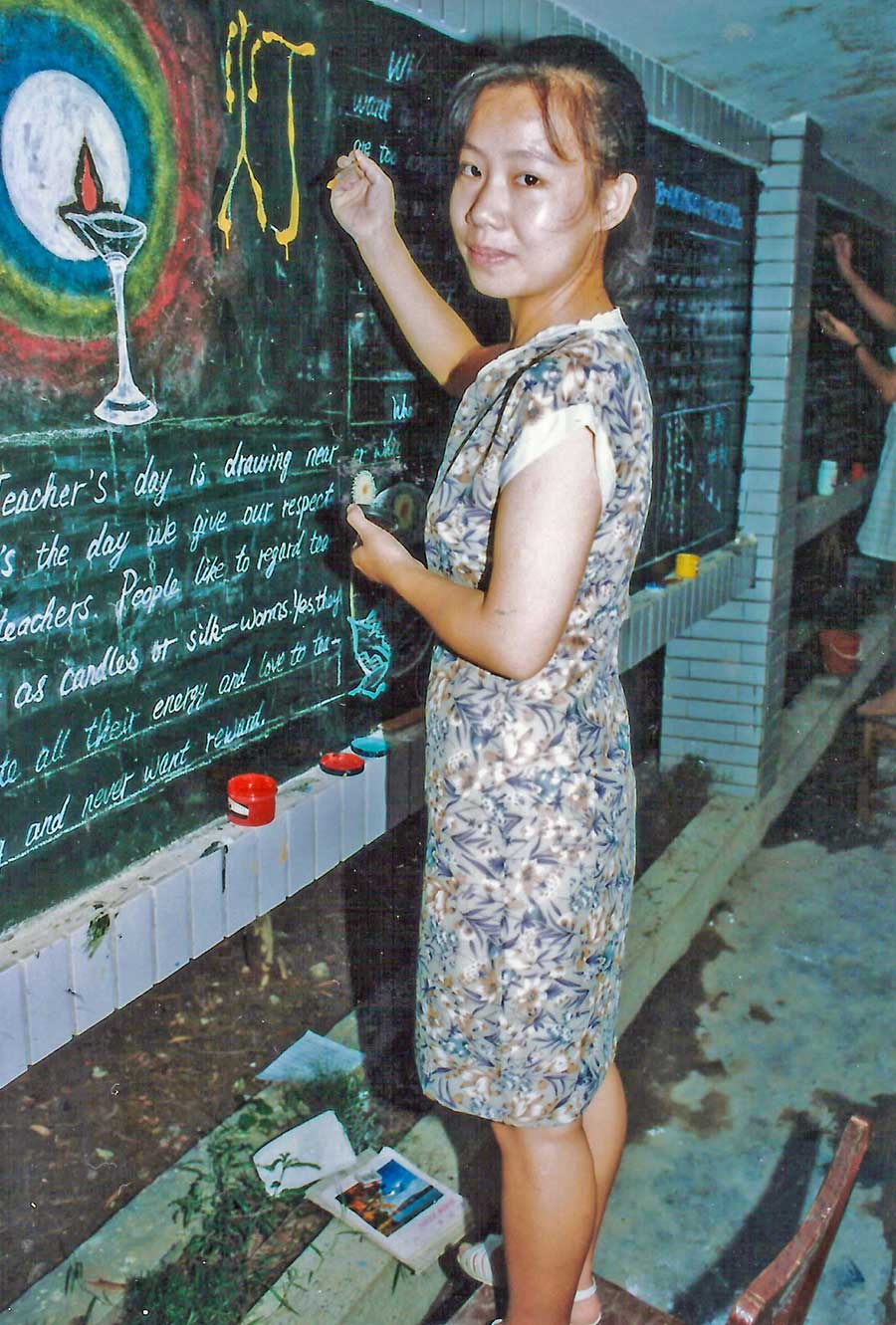
Preparing for National Teachers Day in 1992. [Photo by Bruce Connolly/chinadaily.com.cn]
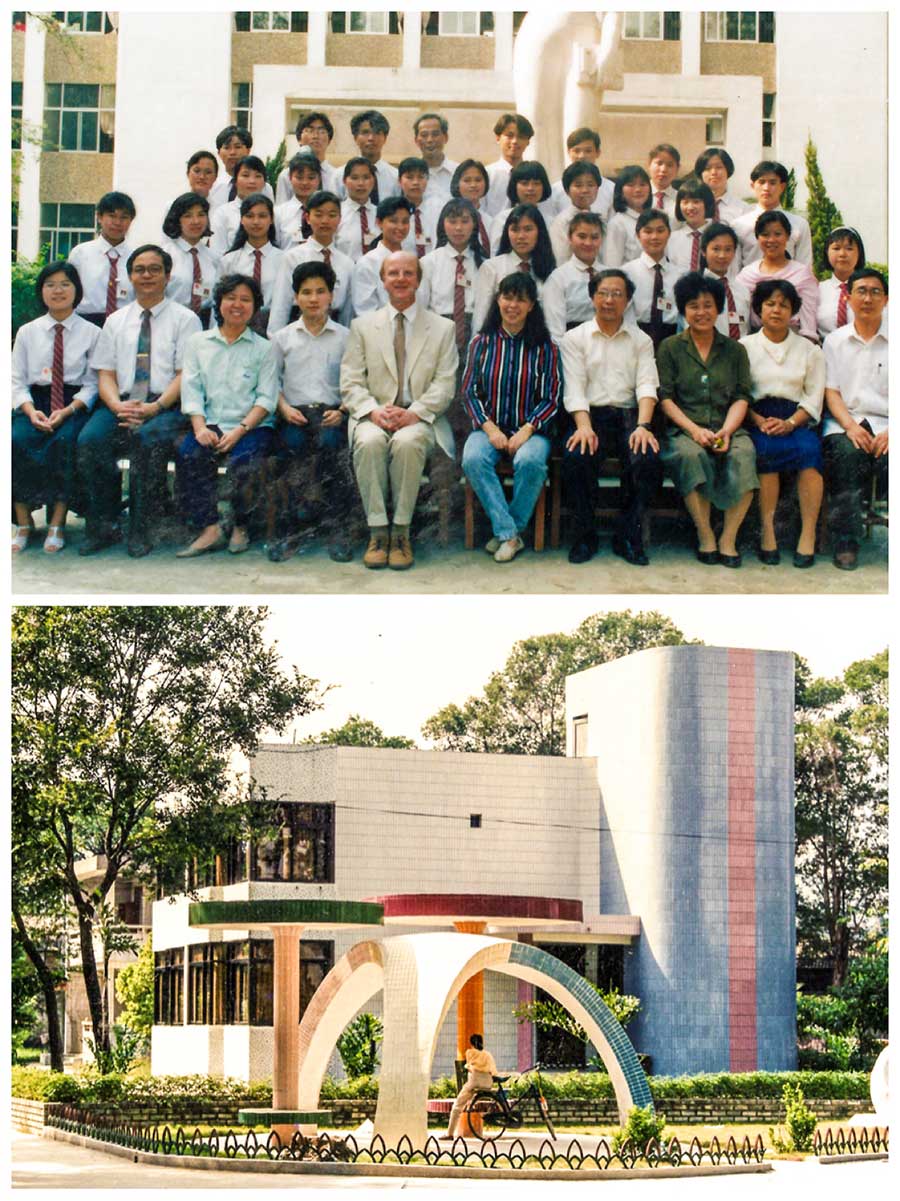
Senior staff and students and Foreign teachers' residence in 1993. [Photo by Bruce Connolly/chinadaily.com.cn]
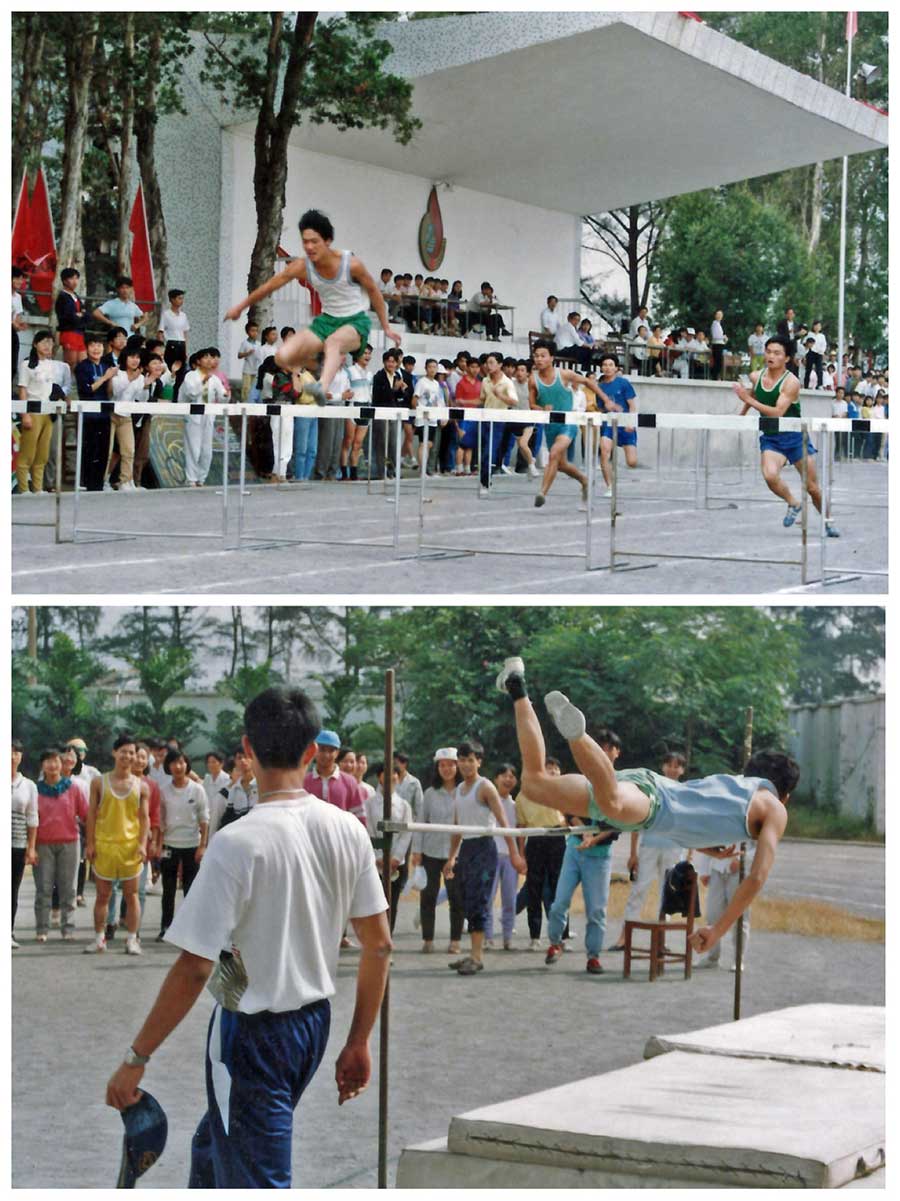
Sports Day at GDFLNS in 1993. [Photo by Bruce Connolly/chinadaily.com.cn]
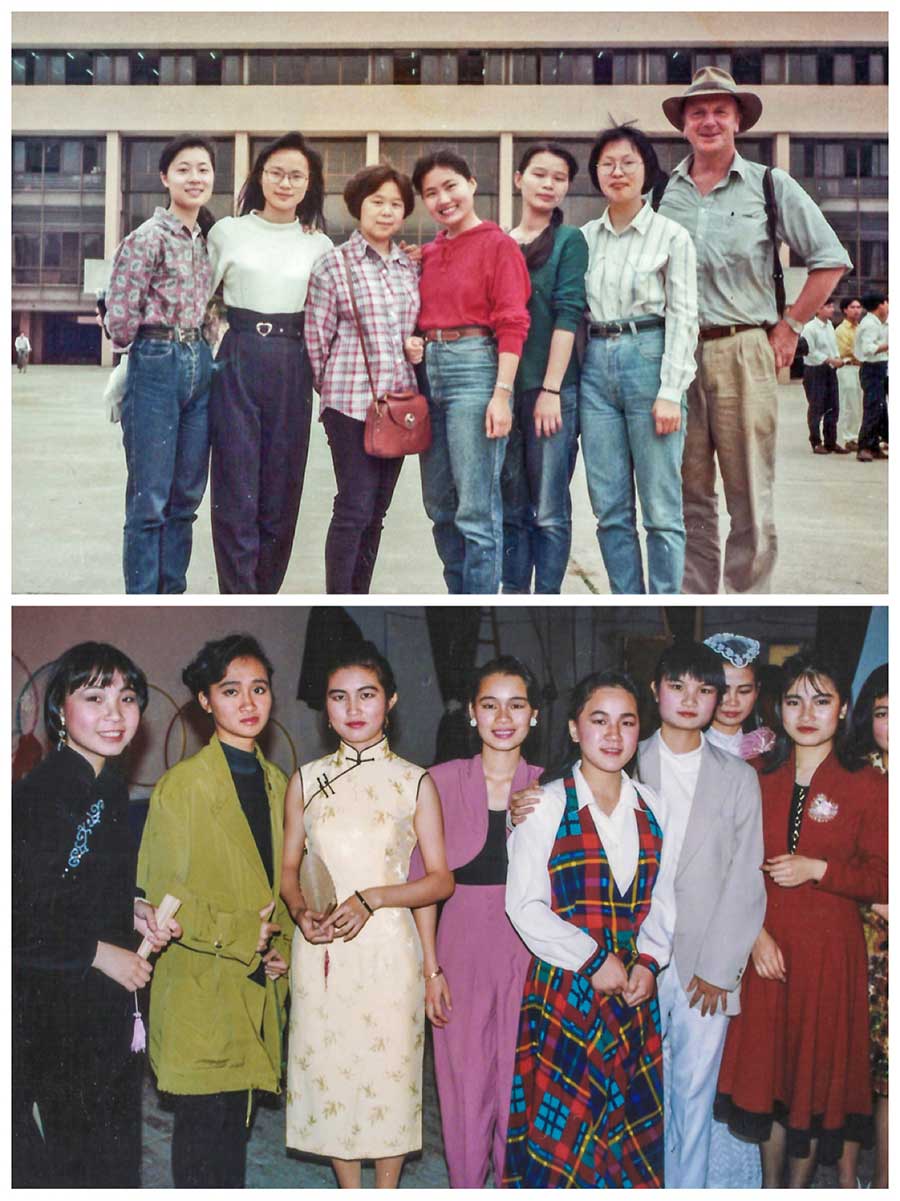
Visiting Jiangmen and fashion show at GDFLNS in 1993. [Photo by Bruce Connolly/chinadaily.com.cn]
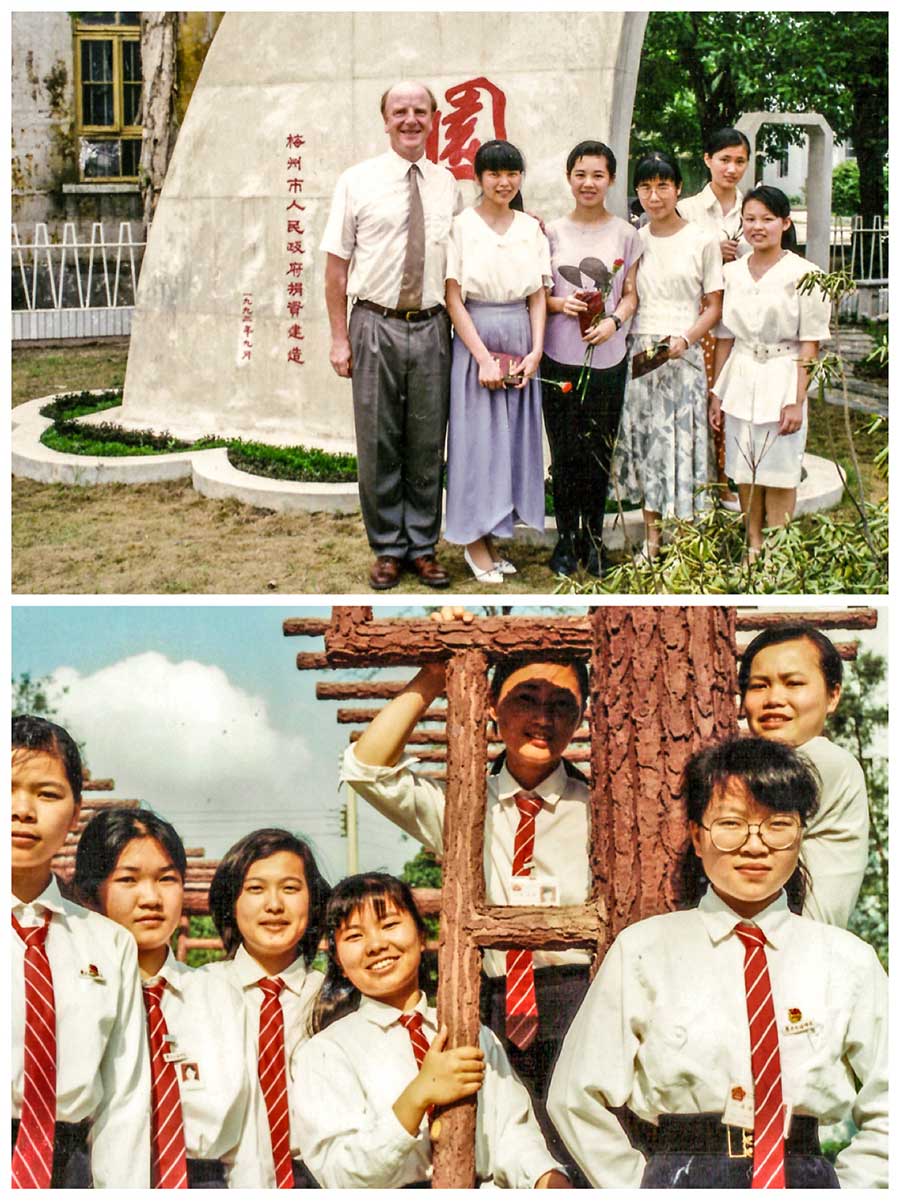
With students at GDFLNS in 1993. [Photo by Bruce Connolly/chinadaily.com.cn]
